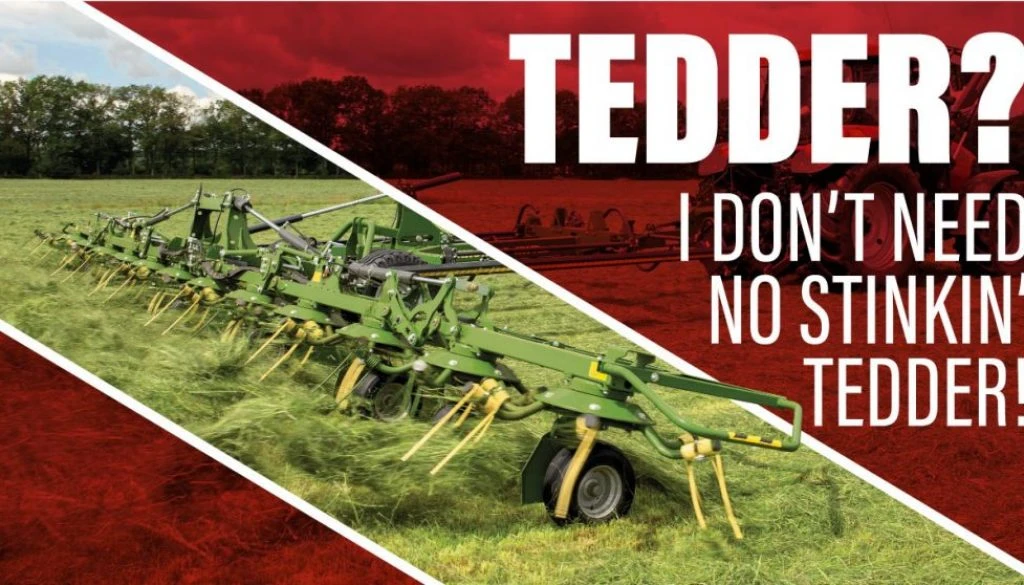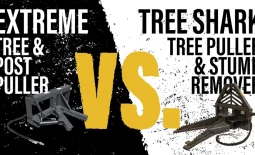Tedder? I Don’t Need No Stinkin’ Hay Tedder!
By: Derek Bontrager, Equipment Sales
I have been working around hay and forage equipment for 15+ years and have heard this phrase more than a time or two: “Tedder? I don’t need no stinkin‘ hay tedder!” While hay tedders have been available for some time, many people still don’t see their value or understand when to use them.
Many people think a hay tedder is only for rescuing a hay or forage crop that has been rained on. Others are afraid that tedding hay will knock all the leaves off alfalfa or clover—thereby hurting the feed value of the crop. While both scenarios are possible, tedding hay typically provides more positives than negatives.
There are two simple principles behind hay tedding. The first is adding air to the windrow. The second, spreading the crop out. This may be an oversimplification, but if one follows this logic it all makes sense.
Typically, when a forage crop is mowed down, it is left in a windrow. This windrow can be anywhere from three to thirteen feet wide depending on the mower. Freshly mowed forage crops tend to be wet and heavy. The weight of piled up crop restricts air movement to the lower side of the windrow, preventing even dry down. If you are aiming for a wetter forage crop—this is not a problem. For those aiming for even hay and forage dry down—this is where a tedder fits in.
All tedders are designed to pull apart the windrow using tines attached to spinning rotors. The spinning tines throw the forage in the air and spread the windrow out over a wider area, allowing the sun and wind movement to naturally dry out the crop. A properly set hay tedder will spread the crop evenly without the tines digging into the soil; keeping quality-killing dirt from getting into the windrow.
Tedding does require some careful management. It is best to use a tedder while the forage still has good moisture to not strip the leaves off alfalfa or clover. Grassier crops are not quite as finicky, but still require a careful eye. The heavier (wetter) a crop is, the more a tedder should be set to throw the crop into the air. This directly aids with even dry down by helping to invert the wetter bottom part of the windrow. A lighter, dryer crop can be thrown in a flatter pattern as it will require less air through the windrow for dry down. Ground speed and rotor speed also need consideration when tedding; driving too fast or operating rotors too slow creates an uneven spread behind the tedder.
One benefit of the Krone hay tedder line is the ability to adjust the tedder for changing conditions or varying crops. It is unlikely that a tedder can be set once and never changed. Krone tedders offer four rotor pitch settings, three tine position settings and rotor to ground adjustment based on tractor drawbar height (accomplished with top link adjustment on 3 pt models).
While a tedder may not solve all your hay drying issues it can help. Typically, customers will see drying time improvements of a half to full-day (depending on weather and crop condition) while maintaining or even improving forage quality and benefiting ROI.
Krone tedders are offered in sizes from 18’ (four rotor) units to 51’ (fourteen rotor) units to match any size of hay mower and operation. Give us a call if you have any additional tedder questions, we are happy to help!










